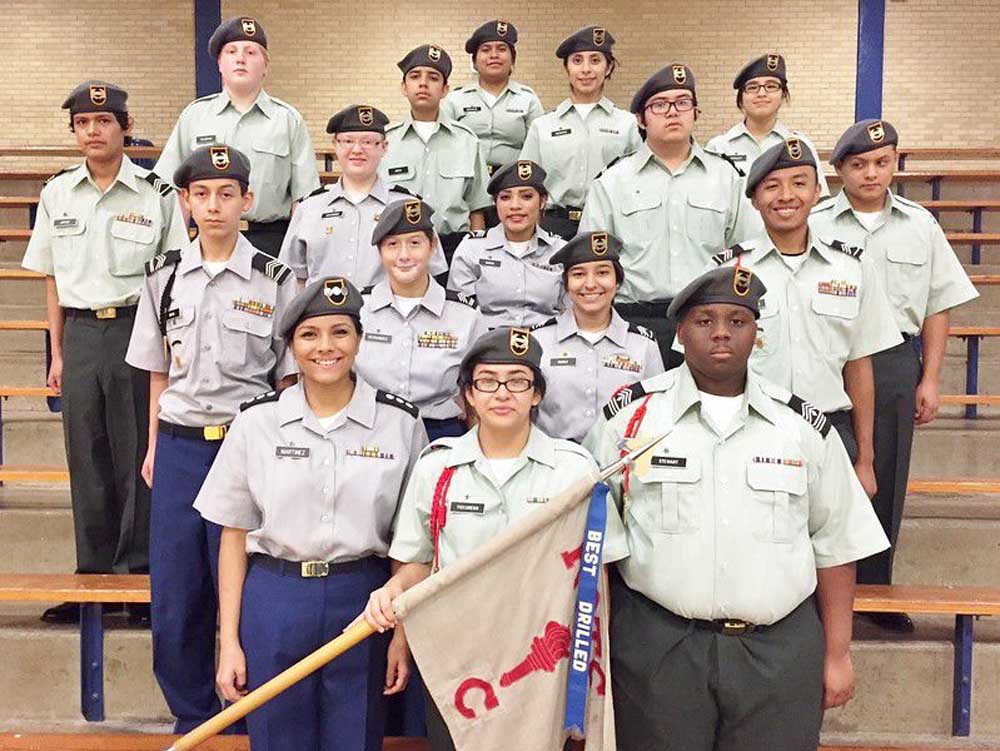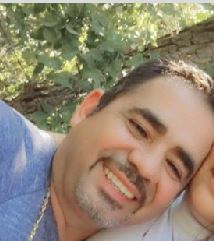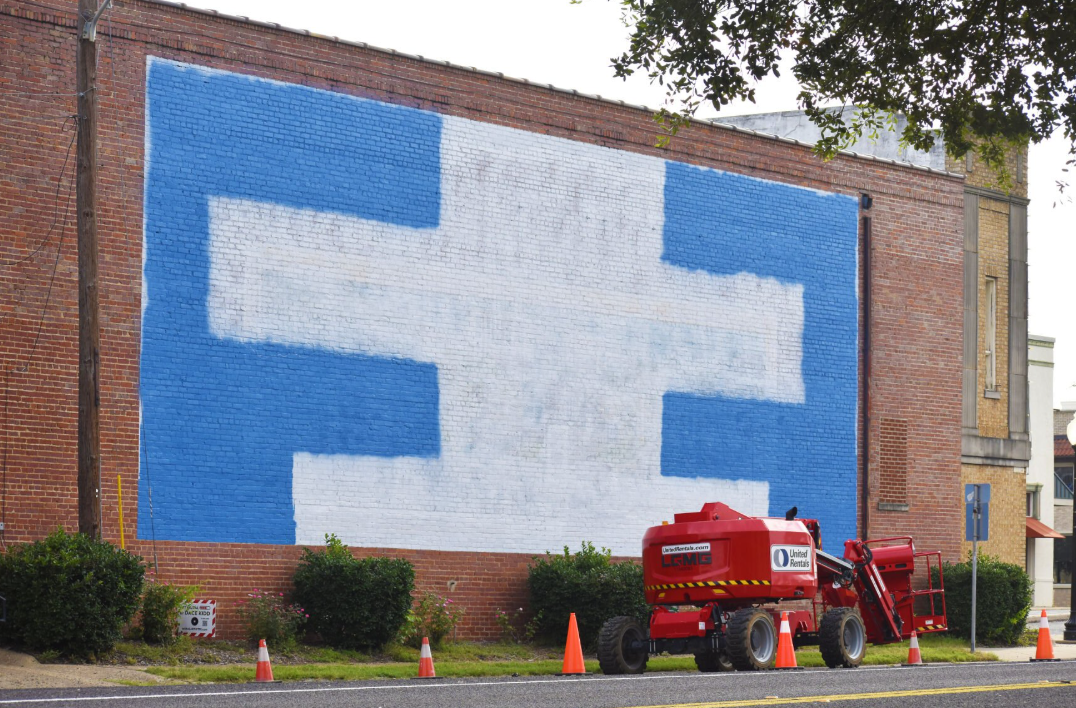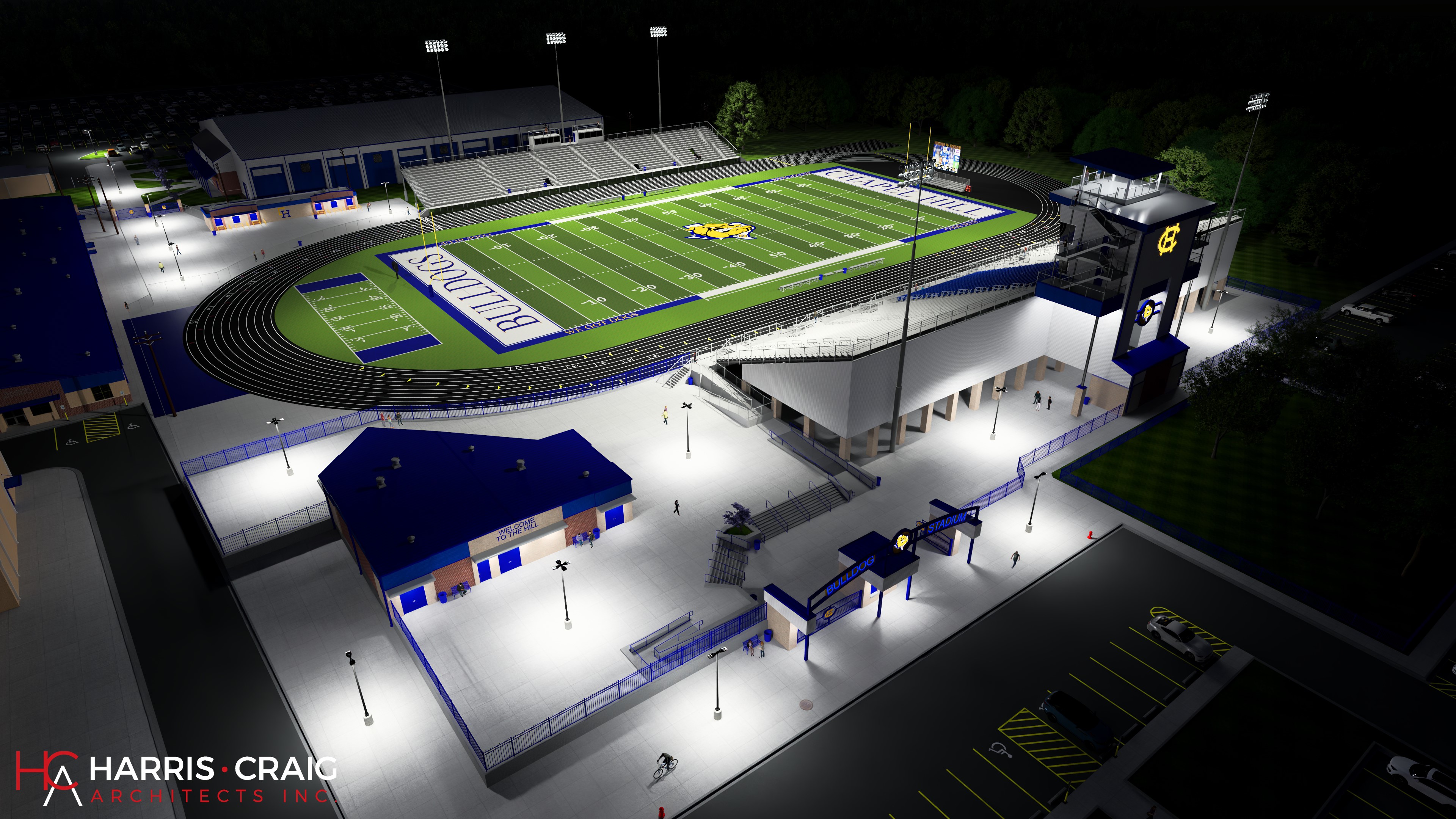John Tyler HS JROTC program teaches cadets leadership, discipline
Published 11:50 pm Monday, May 30, 2016

- Courtesy Charlie Company in the John Tyler High School U.S. Army JROTC was named best drilled company during Parents' Night.
Known as the Lion Battalion because the school mascot is the lion, the mission of the John Tyler High School U.S. Army Junior Reserve Officer Training Corps is not to recruit students into military service, even though a few graduates join the military every year.
“Our mission is to motivate young people to become better citizens. We are not allowed to recruit for the military,” Master Sgt. Steven Johnson, senior army instructor for the JROTC, said.
Trending
Nevertheless, if a cadet wants to join the military, Johnson and Master Sgt. Mike Montoya, the other army instructor, say they will help, because the JROTC is a military affiliated program.
Out of 10 to 15 seniors every year, probably four or five join different military services – the army, navy, air force, marines or coast guard, Johnson said. The program usually has 105 to 110 cadets in the ninth- through 12th grades.
“I’ve learned how to be a leader and how to manage my time and how to not be a wimp around other people,” Fabiola Espinoza, 16, a sophomore, said. “I’m not interested in going into the military, but I would recommend this program due to its improving one’s leadership ability and you have a good experience in here.”
Rather than go into the military, Miss Espinoza plans to attend college and is debating about becoming either a nurse or a physical therapist.
Junior Mariah Williams, 17, is taking the elective JROTC class because she wants to join the U.S. Army after high school and thought it would help prepare her for the military.
A major and battalion executive officer for the JROTC, Miss Williams said serving in the military runs in her family. She has been interested since she was 8 years old and saw her older sister in the military.
Trending
With all the benefits such as insurance and help with college expenses, Miss Williams said, “I think it would be a good opportunity for me.” She also expects that working with people from different cultures would be an interesting experience in the army.
Miss Williams said she loves the military environment of JROTC, the discipline and proudly wears the uniform.
Classes she has taken in JROTC include land navigation and one that taught her to manage her money and save for retirement and emergencies.
After she gets out of the military and earns a college degree, Miss Williams wants a career in law enforcement.
Kailion Bircher, 17, a John Tyler senior and battalion commander for the JROTC, wants to make a 20-year career out of the army as a warrant officer and fly a helicopter.
“I joined JROTC because it’s different from most electives. Most electives are mostly academics. Here you get discipline so you learn how to better yourself,” Bircher said. “You get good life experiences from JROTC. I’ve learned academically and physically and morally. You gain a lot of knowledge from this program.”
It was started in the 1983-84 school year after retired army Major Benny Archuleta approached Tyler ISD.
Cadets can take as many as four different levels of leadership education and training. The freshman class always has the largest number of cadets. They can take JROTC a year, drop out due to a conflict in their class schedule and start back.
If they take JROTC three or four years and decide to join any branch of the military, they automatically get a pay raise for having participated in the high school program, Johnson said.
The army and Tyler ISD share costs of the JROTC.
The army provides uniforms, awards and decorations, classroom computers, desks, tables and lockers. Tyler ISD provides the facility, office computers, some supplies and computer technician assistance. They jointly fund salaries for the instructors, with Tyler ISD getting the two instructors for what it would normally cost the district to pay one teacher, Johnson said.
Cadets learn about proper wearing and appearance of the uniform, medals, ribbons and pins. They are required to wear their uniform to JROTC class once a week. “Proper wearing of the uniform teaches attention to detail and discipline and listening skills,” Johnson said.
The instructors teach a combination of numerous topics, ranging from leadership and map reading to first aid, financial planning and other life skills.
“Not only do we teach in the classroom, but we also teach things like drill and ceremony, which is basically how to march and a little discipline,” Johnson said.
JROTC has other projects. Every year, cadets go to different retirement communities to visit, bring Christmas cheer and sing Christmas carols for residents. “It teaches the cadets about getting involved in the community,” Johnson said.
Montoya talks to them about substance abuse and the effects of drugs, drinking and smoking. “We require no profanity, no racial slurs and show respect for each other. We instill a lot about how to talk properly (with) no slang,” he said.
Johnson teaches the cadets about financial planning – long-range financial plans, budgeting, investing, credit card debt and different types of insurance, such as life insurance, auto insurance and mortgage insurance.
“Another thing we teach are basic skills from the military,” he said, as well as information about the different military services. Recruiters give a presentation to explain their service and what it can offer cadets.
Every year, cadets spend a couple of weeks in an activity called Cadet Challenge, which consists of events including pushups, sit ups, flexibility exercise and a shuttle run between lines 30 feet apart.
Cadets are divided into four groups or companies – Alpha, Bravo, Charlie and Delta – which is determined by when they can fit JROTC into their class schedule. Each company has a commander, a first sergeant and a platoon sergeant. “We watch cadets the first year to see if they have leadership potential,” Johnson said.
After their first year, the instructors pick the best 10 cadets to participate in a weeklong summer leadership camp at Fort Hood. Those interested in leadership positions can then apply. Instructors pick the company leaders.
There are special teams, such as color guard, drill team and physical training team. The drill team does routines like spinning rifles. The physical training team competes against other JROTC programs. The color guard presents the U.S and Texas flags at 10 to 20 ceremonies throughout the school year and raises the U.S. flag on a flagpole during the national anthem at home John Tyler High School football games.
“We spend the first couple of months of every school year teaching how to march,” Johnson said. During a parents’ night ceremony in mid-November, the four companies compete in different movements and maneuvers and the drill team gives both individual and group performances.
The John Tyler JROTC travels to invitational competitions against other JROTC programs in Birdville and Mesquite as well as competing in the online JROTC Leadership and Academic Bowl and two “postal competitions,” in which results are sent to the host JROTC program.
The main thing cadets get out of being in JROTC, Johnson said, is learn how to be a leader.
Twitter: @Betty_TMT






